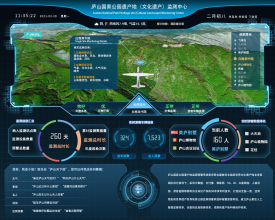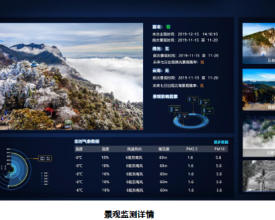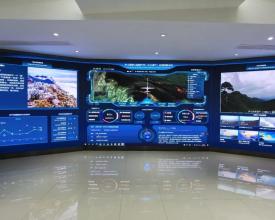
Collaborative Monitoring System for the Phenological phenomena’s Forecasting of Large-Scale Cultural Landscape: Case from Lushan National Park, China
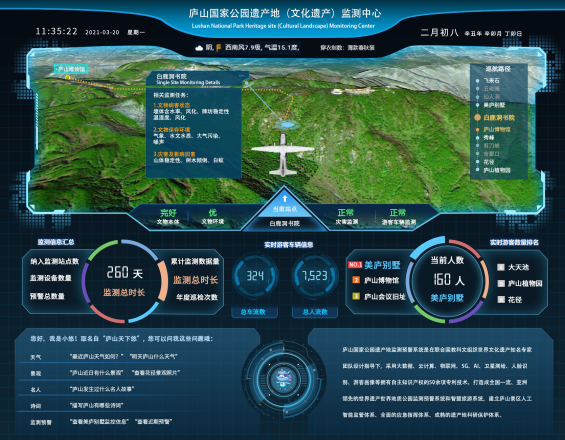
The Lushan National Park, inscribed to World Heritage List in 1996, is famous for its unique cultural landscape and its phenological phenomena.
However, the impact of climate change and increasingly extreme weather events are threatening the sustainable appearance of these phenological phenomena.
For better preserving and monitoring the Outstanding Universal Value and other heirtage values of Lushan, the managers of National Park collaborate with professional heritage monitors and heritage management specialists to create the Lushan World Heritage Monitoring and Early Warning System (LMES) platform, which provides not only technical support for the management of heritage sites, helping managers to scientifically prepare for possible climate changes, but also better technical services for neighboring communities and visitors with accurate forecasts of daily weather and seasonal phenological phenomena.
Context
Challenges addressed
① Environmental challenges: The appearance of the sea of clouds is gradually decreasing in many places in China. Whether the beauty of the Lushan landscape will also fade in the future is an urgent challenge, which needs targeted monitoring data.
② Technical challenges: The diverse phenological phenomena of Lushan appear in different seasons. This means that monitoring devices need to capture multiple meteorological factors and analyze the conditions under which each phenological phenomenon is generated. The monitoring equipment needs to record videos simultaneously and perform initial judgment, recognizing and picking the phenological phenomena from archived photos and videos, and gradually improving the accuracy of the judgment through artificial-intelligence-based machine learning.
Location
Process
Summary of the process
The building blocks interact in the following steps to address the environmental, social, and economic challenges:
① Based on an a value evaluation, the forecast of phenological phenomena that monitors provide could also serve for personalized services, through which visitors can identify the most appreciable spot/panorama to visit.
② The system can also optimize the site’s visitor management while the monitoring system could work as an open-to-public platform, emphasizing the significance of preservation and sufficient ways of sustainable preservation by holding related activities.
Building Blocks
Recognize and Evaluate Phenological phenomena
Establish a professional platform for meteorological research and phenological phenomena forecasting, combined with a real-time image capturing and recognizing system.
Enabling factors
- Study on the conditions for the formation of phenomena, establish the in-time analysis system for clarifying and establishing a statistic model for forecasting.
- Meteorological equipment recognizes and forecasts the appearance of the phenomenon, then professional monitoring equipment captures, records, and broadcasts real-time images of the landscape.
- With long-term data analysis, we established the platform, improving its accuracy with daily machine learning, classifying different phenomena from their feature in appearance, and providing progressing forecasts.
Lesson learned
For echoing the challenge of climate change, the monitors of Mount Lushan used meteorological monitoring equipment combined with high-definition images to monitor the landscape of phenological phenomena and proved that the frequency and scale of its occurrence are correspondingly stable now, with the accuracy of approximately 60% to 80%.
Establishment of the Lushan World Heritage Monitoring and Early Warning System (LMES)
The establishment of the interactive system between the site, managers, and visitors
Enabling factors
With accurate meteorological forecasting, the platform can send accurate time and location of the appearance of phenological phenomena to users, and users of the platform can also interactively record and do live streams in return.
Lesson learned
Tourists of Mount Lushan can appreciate the cultural landscape sufficiently by subscribing to the forecast from LMES. At the same time, LMES can also send and receive images and videos interactively.
Impacts
① Lushan as a large-scale heritage site is diverse in natural phenomena. The establishment of the Lushan World Heritage Monitoring and Early Warning System (LMES) works under diverse or extreme weather conditions, which will be beneficial for both multidisciplinary research and daily management.
② The anaylsis of the phenological monitoring will show synchronously on the screen of the monitoring center. The visualized result can be also viewed on the portable interactive platform which visitors could download easily, even online live streaming is possible. Both visitors and the local community could receive the phenological forecasting messages from the platform so that they can better make their visiting or work plans.
Beneficiaries
① Scholars can can research on the formation of the Lushan's landscape.
② Residents can get more accurate weather forecasts, which is beneficial for the local community.
③ Visitors and tourists can get tour guidance through the monitoring platform.
Sustainable Development Goals
Story
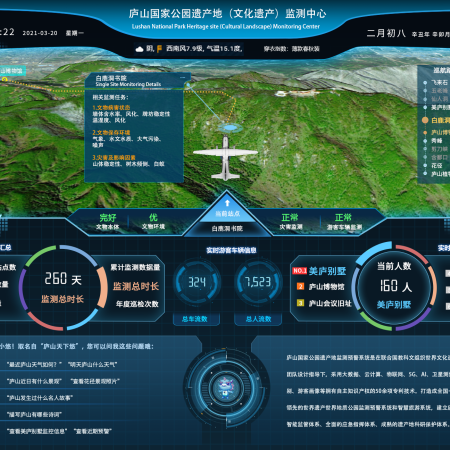
The Lushan National Park, inscribed to World Heritage in 1996, is famous for its unique cultural landscape, especially the phenological phenomena.The core value of Lushan Cultural Landscape is the aesthetic enlightenment that people feel while appreciating the natural landscape, this beauty is not static, but dynamic, and the traditional Chinese Shan-Shui paintings, poetries, and songs always emphasize the characteristics of this kind of vivid rhythm.
At the same time, the drastic climate change and the increasingly extreme weather also threatened the regular appearance of the phenological phenomena.
For better preserving and monitoring the object of the core value attribute of Lushan, the managers of Lushan National Park collaborate with professional heritage monitors to create the Lushan World Heritage Monitoring and Early Warning System (LMES) platform. The LMES is an all-platform, multi-functional heritage monitoring system, which fully leverages modern technologies such as big data, cloud computing, artificial intelligence, satellite mapping, high-definition photography, and so on. One of LMES’s most creative functions is its monitoring of Lushan’s phenological phenomena. For the first time, managers of the Lushan National Park begin generating cultural landscape monitoring into daily site monitoring, which means the diverse value of the site is widely understood in the past years.
The monitoring system and local management share the same database, including the meteorological and phenological landscape monitoring database, which will provide more targeted services for both local communities and tourists.
We also hope to use the monitoring system as a platform to communicate with the public about the significance of cultural heritage preservation, and also the purpose, technic tools, and possible beneficiaries.Besides, we also considered the challenges that LMES applications may face. By analyzing the monitoring data of Mount Lushan in the past years, we found that the frequency of the appearence of cloud seas in Mount Lushan is still maintained at the same level as in the past decade. We will continue to observe the identification and observation of cloud seas and other landscapes to actively address the challenges of climate change.
